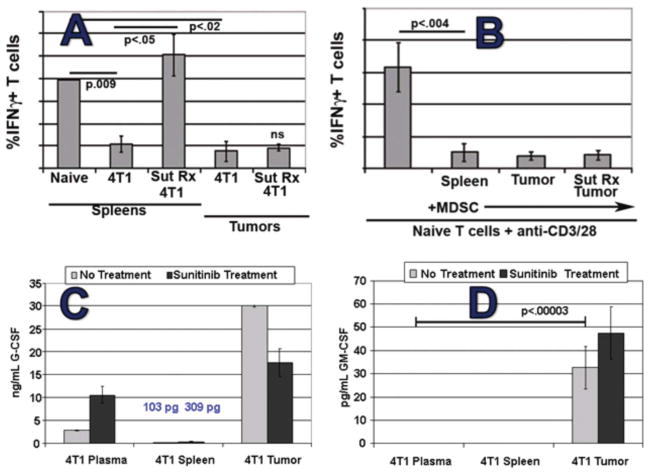Figure 9.
Evidence of intratumoral MDSC resistance to sunitinib in the 4T1 model. (A) % of CD3+ T cells producing IFN-γ upon anti-CD3/CD28 stimulation demonstrates that 4T1-induced inhibition within spleen is reversible by sunitinib treatment but not the inhibition observed within tumor. (B) Sunitinib-treated 4T1 bearing-mice maintained high levels of intratumoral but not intrasplenic MDSCs, and isolation/addition of the former to T cell assay was highly suppressive, demonstrating that intratumoral MDSCs retained their suppressive function during sunitinib treatment; (C) and (D) G-CSF was detectable in blood, spleen and tumor compartments but GM-CSF was only detected intratumorally.

